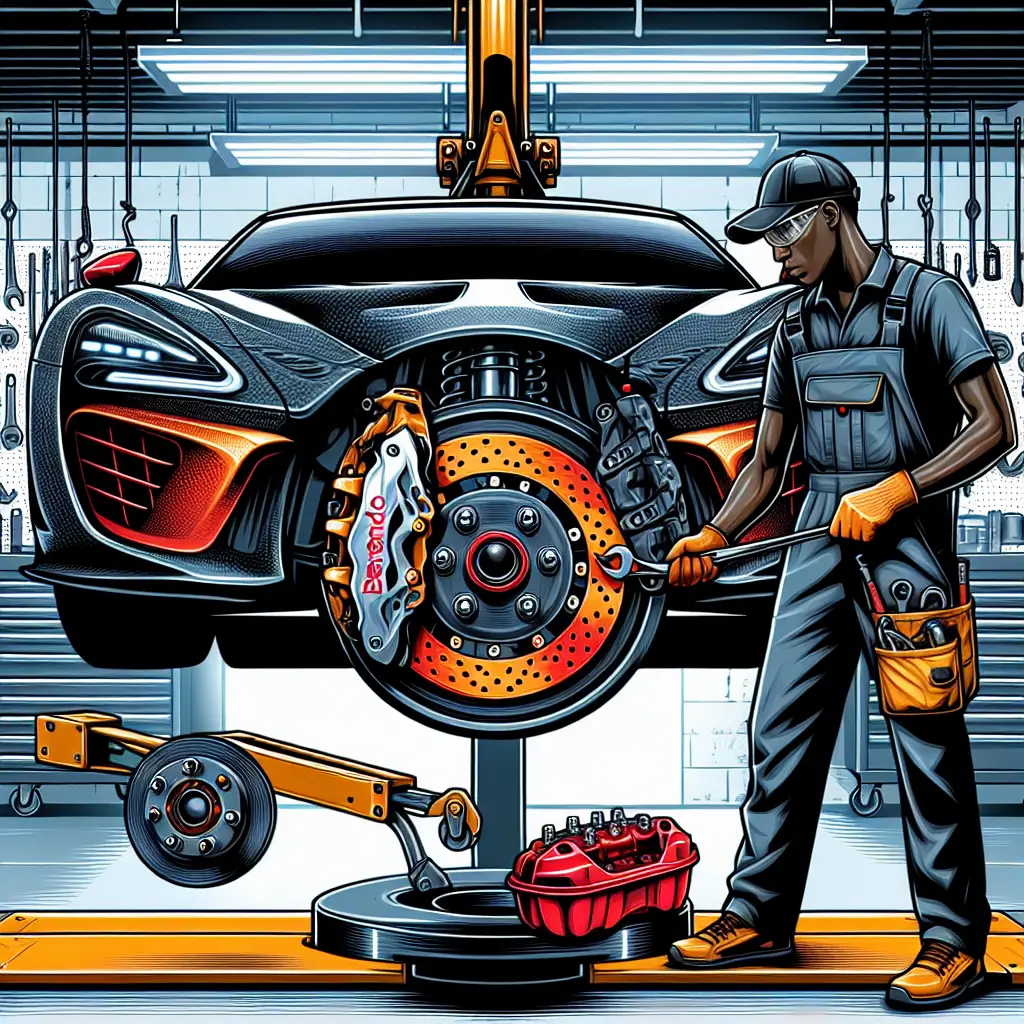How To Install Brembo Caliper Covers: Enhancing Your Ride’s Aesthetic
When it comes to customizing your vehicle, the devil really is in the details. From custom paint jobs to performance modifications, car enthusiasts know that the right tweaks can not only improve their ride’s look but also its performance. One often-overlooked detail that can really make your wheels pop is the addition of caliper covers, and Brembo is a name that stands out in the world of high-performance brakes. Whether you’re looking to add a touch of style or aiming for a subtle but noticeable upgrade, installing Brembo caliper covers can be the perfect project for a weekend afternoon.
In this blog post, we’ll guide you through the process of installing Brembo caliper covers, discussing the tools you’ll need, the steps you should follow, and some tips to ensure a successful installation. But remember, while this may seem like a simple exterior modification, we always recommend safety first and, when in doubt, consult a professional mechanic.
Tools and Materials Needed
Before you begin the installation process, make sure you have the following tools and materials ready:
- Brembo Caliper Covers (appropriate size for your vehicle)
- High-temperature brake caliper paint (if you want to customize the color)
- Socket and/or wrench set
- Flathead screwdriver
- Torque wrench
- Jack and jack stands or a lift
- Wire brush
- Brake cleaner
- Protective gloves
- Eye protection
Step-by-Step Guide to Installation
Step 1: Prepare Your Vehicle
Safety is paramount, so to start, ensure your vehicle is on a flat, stable surface. Engage the parking brake and place wheel chocks behind the rear tires to prevent any movement. Then, using your jack and jack stands, carefully lift the front of your vehicle and secure it.
Step 2: Remove the Wheels
Using your socket set, loosen and remove the lug nuts on your front wheels. Remove the wheels to expose the brake calipers.
Step 3: Clean the Calipers
Now that you have access to your brake calipers, it’s time to clean them. Brake dust and road grime can affect the fit and finish of your caliper covers. Use a wire brush and brake cleaner to thoroughly clean the calipers.
Step 4: Test Fit the Caliper Covers
Before you start the actual installation, do a test fit of the Brembo caliper covers to ensure they align properly and do not interfere with your brake system. This will save you trouble later on.
Step 5: Secure the Caliper Covers
Follow the instructions provided by Brembo to attach the covers to your calipers. This usually involves using the clips provided to secure the covers onto the calipers. Ensure each cover is snug and not touching the brake rotors.
Step 6: Reinstall the Wheels
Once the covers are in place, you can reinstall your wheels. Tighten the lug nuts by hand first and then with a torque wrench to ensure they are properly and securely fastened. Make sure you refer to your vehicle’s manual for the correct torque specifications.
Step 7: Lower Your Vehicle and Conduct a Test
Carefully lower your vehicle back to the ground, remembering to remove the wheel chocks and disengage the parking brake first. It’s important to conduct a test drive to ensure that there’s no rubbing or noise coming from the newly installed caliper covers.
Additional Tips
- If you’ve opted to paint your caliper covers, this should be done before installation, using high-temperature brake caliper paint. Give them plenty of time to dry according to the paint manufacturer’s instructions.
-
When cleaning your calipers, be meticulous. Any debris left behind can cause your covers to fit improperly or create noises while driving.
Conclusion
Installing Brembo caliper covers provides an instant aesthetic upgrade to any vehicle and is a straightforward task that can be accomplished by anyone with basic mechanical skills and the right tools. Remember to always prioritize safety and double-check your work to ensure a successful installation.
For detailed information on Brembo products, check out their official website. You may also find valuable installation tips on auto enthusiast forums or through how-to videos from automotive experts. Reviews and feedback from other car owners can also be extremely helpful and can be found on sites like Car and Driver. Remember, good preparation and careful attention to detail will make the process smoother and the result that much more satisfying.
Now, you can hit the road in style, knowing you’ve just given your car a custom touch that stands out from the crowd. Enjoy the upgrade, and drive safely!
Note to readers: This article is intended for informational purposes only. While we aim to provide accurate and helpful information, we encourage our readers to always seek professional advice for such installations if they are not confident in their mechanical skills.

